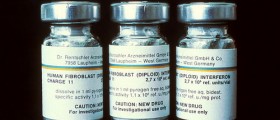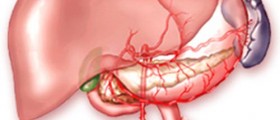
Chronic infection with HBV (hepatitis B virus) is problem for worldwide population. Some 350 millions of people around the globe suffer from this condition. In some patients, infection remains in inactive phase, where there is a low viral replication and remission. However, significant amount of hepatitis B patients will develop chronic hepatitis B and suffer from major liver problems.
According to the statistics, about 20% of these patients are bound to develop liver cirrhosis in 5 years. If a person develops liver cirrhosis there are 55 to 85% chances to survive over 5 years. Cirrhosis patients are also much more likely to develop hepatocellular carcinoma. Statistic data also reveals that about a quarter of a million people die every year because of liver problems associated with HBV infection.Forms of Chronic Hepatitis B
Chronic hepatitis patients are divided into two groups, based upon the presence of hepatitis B antigen (HBeAg) and hepatitis B antibody (anti-HBe).HBeAg positive chronic hepatitis B is common in early stages of chronic hepatitis B infection, either after acute infection with HBV or a few years after. Most of these patients maintain high replication of the virus and experience liver necroinflammation, if the condition is not treated properly. Other problems also include worsening fibrosis, liver cirrhosis and hepatocellular carcinoma. However, about 5 to 15% of these patients can experience spontaneous clearance of viral antigen and transition to inactive phase of infection, with some minimal liver problems.
HBeAg negative chronic hepatitis B is usually seen in later stages of HBV infection. Patients experience increase of liver enzymes, necroinflammation and liver fibrosis because of HBV replication. This is potentially severe type of chronic hepatitis B and it usually progresses further to liver cirrhosis and sometimes hepatocellular carcinoma. In rare occasions patients may experience spontaneous remission.
HBV Treatment Measures
There aren’t many spontaneous remissions among patients suffering from chronic hepatitis B and many of them may expect liver problems. Because of that, both groups of these patients require therapeutic intervention.
Interferon alpha, lamivudine and adefovir dipivoxila are the only three drugs available for the treatment of chronic hepatitis B. HBeAg positive chronic hepatitis B patients respond to all of these drugs, while HBeAg negative patients are found to respond almost only to 12 month (or longer) treatment with interferon alpha.
Long term treatment with lamivudine usually causes positive response in most patients, but these effects are usually worn off by three years of treatment. Adefovir long term therapy is also beneficial for some 70% of chronic hepatitis B patients and drug resistance is rare in this case. Patients who became resistant to lamivudine may also be treated with adefovir.
















Your thoughts on this
Loading...